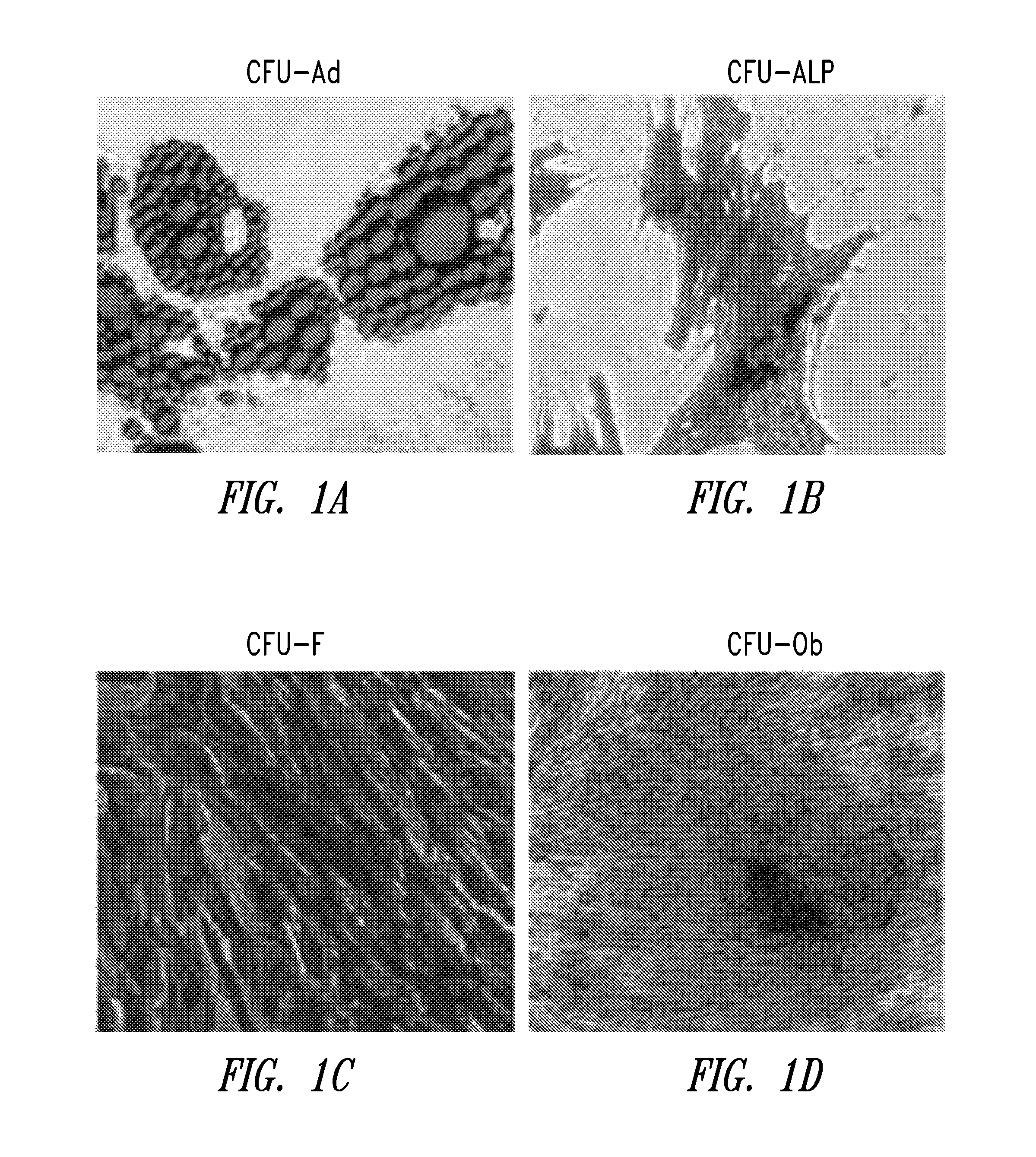Immunophenotype and immunogenicity of human adipose derived cells
a technology of immunogenicity and adipose tissue, which is applied in the field of regenerative medicine, can solve the problems of unidentical cell preparations in different laboratories, unsatisfactory immune response, and unsatisfactory immune response, so as to reduce the use of immunosuppressive drugs, reduce the severity of immune response, and alleviate the effect of general immune suppression and unwanted side effects
- Summary
- Abstract
- Description
- Claims
- Application Information
AI Technical Summary
Benefits of technology
Problems solved by technology
Method used
Image
Examples
example 1
Immunophenotype of Human Adipose Derived Cells: Temporal Changes in Stromal- and Stem Cell-Associated Markers
[0176]Adipose tissue represents an abundant and accessible source of multipotent adult stem cells for tissue engineering applications. However, not all laboratories use cells at equivalent stages of isolation and passage. In view of the fact that some investigators use freshly isolated stromal vascular fraction (SVF) cells for tissue engineering purposes, the experiments provided herein were performed to compare the immunophenotype of human adipose derived cells, including human SVF cells and ADAS cells, as a function of adherence and passage. The immunophenotype of freshly isolated human adipose tissue-derived stromal vascular fraction cells (SVFs) was compared with serial passaged ADAS cells. The initial SVFs contained colony forming unit-fibroblasts (CFU-F) at a frequency of 1:30. Colony forming unit-adipocytes (CFU-Ad) and -osteoblasts (CFU-Ob) were present in the SVF at ...
example 2
The Immunogenicity of Human Adipose Derived Cells
[0203]Regenerative medical techniques require an abundant source of human adult stem cells that can be readily available at the point of care. Without wishing to be bound by any particular theory, it is believed that allogeneic stem cells can achieve this goal. Since adipose tissue represents an untapped reservoir of human cells, the following experiments were designed to compared the immunogenic properties of freshly isolated human adipose tissue-derived stromal vascular fraction cells (SVFs) relative to passaged ADAS cells. The results presented herein demonstrate that the expression of hematopoietic associated markers (CD11a, CD14, CD45, CD86, HLA-DR) on adipose-derived cells decreased with passage.
[0204]In addition, it was observed that in mixed lymphocyte reactions (MLRs), SVFs and early passage ADAS cells stimulated proliferation by allogeneic responder T cells. In contrast, the ADAS cells that were passaged beyond passage P1 fa...
example 3
Selection of ADAS Cells
[0222]The present disclosure demonstrates that ADAS cells express stem cell associated markers including, but not limited to human multidrug transporter (ABCG2) and aldehyde dehydrogenase (ALDH). With respect to ALDH, ALDH is an intracellular enzyme that can be used to select for ADAS cells. Without wishing to be bound by any particular theory, it is believed that a cleavable substrate can be provided to ADAS cells, wherein the substrate when so present in an ALDH+ ADAS cells is cleaved causing the cleaved substrate to signal for the presence of ADLH+ ADAS cells. Such a signal can be in a form of a fluorescence which can be used to sort ALDH+ADAS cells.
[0223]The disclosures of each and every patent, patent application, and publication cited herein are hereby incorporated herein by reference in their entirety.
PUM
| Property | Measurement | Unit |
|---|---|---|
| concentration | aaaaa | aaaaa |
| concentration | aaaaa | aaaaa |
| concentration | aaaaa | aaaaa |
Abstract
Description
Claims
Application Information
 Login to View More
Login to View More - R&D
- Intellectual Property
- Life Sciences
- Materials
- Tech Scout
- Unparalleled Data Quality
- Higher Quality Content
- 60% Fewer Hallucinations
Browse by: Latest US Patents, China's latest patents, Technical Efficacy Thesaurus, Application Domain, Technology Topic, Popular Technical Reports.
© 2025 PatSnap. All rights reserved.Legal|Privacy policy|Modern Slavery Act Transparency Statement|Sitemap|About US| Contact US: help@patsnap.com



